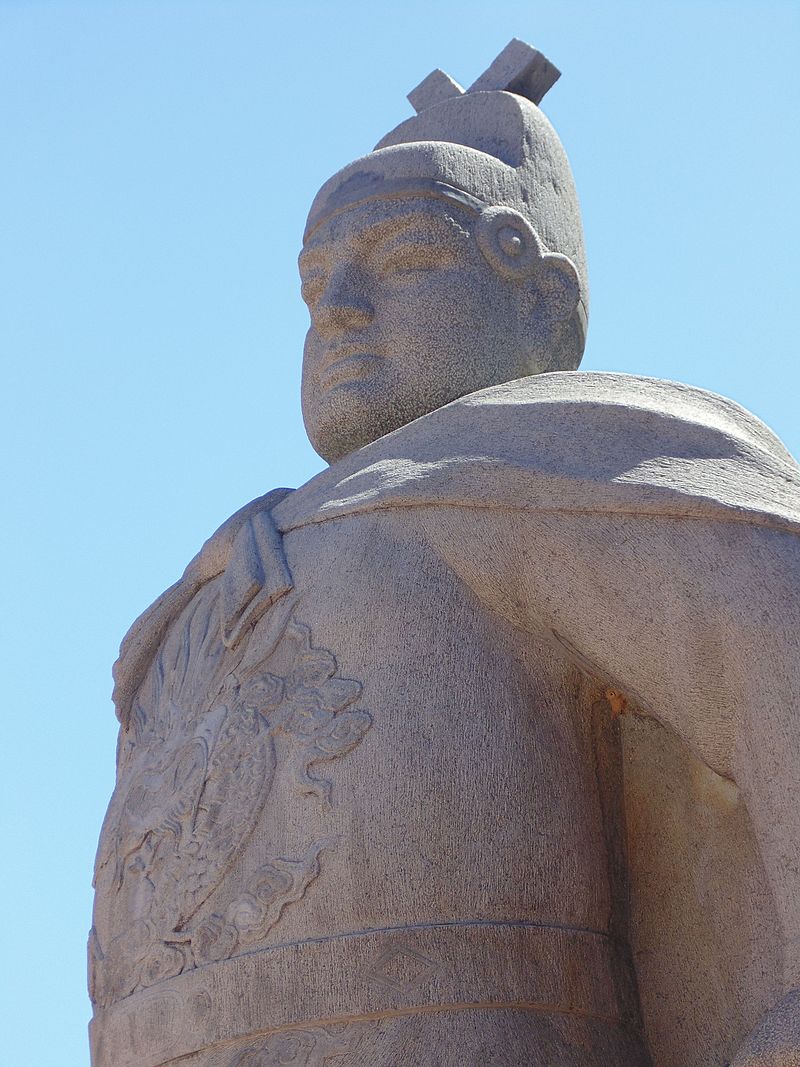David Abulafia’s The Boundless Sea is not, strictly speaking, a history of oceans. As the sub-title suggests, this book is first and foremost a human history.
While environmental factors like climatic changes are addressed, this work is not focused on ecological communities or human impact on marine habitats. Rather, this is a remarkably detailed and readable account of the ways in which oceans have shaped human settlement, migration, political power, and commercial ventures.
Abulafia divides his work into five parts, the first three of which address the histories of individual oceans (Pacific, Indian, and Atlantic). The remaining two examine the interconnections among these bodies of water after 1492. This organization keeps the book’s length from feeling overwhelming, as do the neatly organized chapters, which focus on many different regional stories happening within these immense oceans.

The Three Wise Men at Otley Parish Church, bearing three prized pre-modern trade items: gold, myrrh, and frankincense.
Abulafia attempts a “rounded” rather than complete history of the oceans, yet his ability to skillfully balance both breadth and detail creates a comprehensive narrative that takes the reader across the globe, from Greenland to Japan to Polynesia.
These diverse perspectives help to emphasize Abulafia’s claim that the trading networks that supported vast empires were often created and maintained by ocean-going outsiders, such as Koreans, Malays, and Indonesians, who he considers the “real pioneers in crossing the open sea."
In fact, the “middlemen” play a crucial role throughout this book. For instance, the medieval kingdom of Sri Vijaya in Sumatra thrived because its convenient location allowed trade with both India and China, which granted it the rank of “first-class trading state” in 1016. Later, Oman benefitted from facilitating the transport of goods between European colonies in India and Indonesia and Islamic regions, cementing their place as valuable middlemen throughout the 18th century.

Chinese manufactured goods, like this jar from the Ming dynasty, were highly desired trade items.
Scandinavia was also central to global trade networks at this time, with Denmark existing as a drop-off point for Chinese and Indian goods, which were then shipped to the West Indies. The Danes were able to act as trade intermediaries for European powers who were so frequently at odds with one another, for instance, supplying French Mauritians with English goods during the Napoleonic Wars.
Abulafia furthermore makes the importance of a region’s trading prowess clear when explaining that the Portuguese Empire emerged from a network of trading posts.
One of the greatest strengths of this book is precisely that the focus extends beyond the most obvious explorers and emperors. The Yongle Emperor, Alexander the Great, and Amerigo Vespucci sit alongside the Greek traveler Hippalus who revealed the influence of monsoon winds in the Indian Ocean; Polynesian navigators, like Kupe, who used stars, ocean swells, and seabirds to find land; and the many anonymous merchants who paved the sea highways around which this book revolves.
Abulafia is also able to avoid resorting to an encyclopedic presentation of details, instead offering valuable interpretations, particularly due to the trade connections he continuously draws between various world regions.
For instance, his chapter on Zheng He’s voyages suggests that the Ming dynasty’s motivations may have been more imperial in nature than other narratives have claimed and his discussion of the Indian Ocean in the early modern era reveals Chinese-Spanish tension that is often eclipsed by the focus on contemporaneous colonial explorations in the Americas.

Statue of Zheng He in Malacca, Malaysia.
The emphasis on trade does occasionally exclude significant issues, like the role of European diseases in the decimation of indigenous populations in the Americas and Oceania, which is mentioned but not explored with the same level of detail that Abulafia applies elsewhere.
The book also tilts toward pre-modern history, as the fifth part of the book, which addresses modern topics like the Panama Canal, steamships, and wartime shipping, seems to lack the same level of substance and impact as the rest of the work, though he does conclude the book by saying that because of climate change, pollution, and overexploitation, “by the beginning of the twenty-first century, the ocean world of the last four millennia had ceased to exist."
The breadth of his work enables the reader to gather glimpses of human-induced environmental change, but Abulafia is more interested in the role of the environment – ocean currents, mountains, spices, timber, gold – on the emergence and development of human communities and their interactions with each other.
Predominantly a history of commerce and trade, The Boundless Sea nonetheless will appeal to readers with wider interests who want to better understand the ways in which humans are defined by the world’s largest ecosystems.
